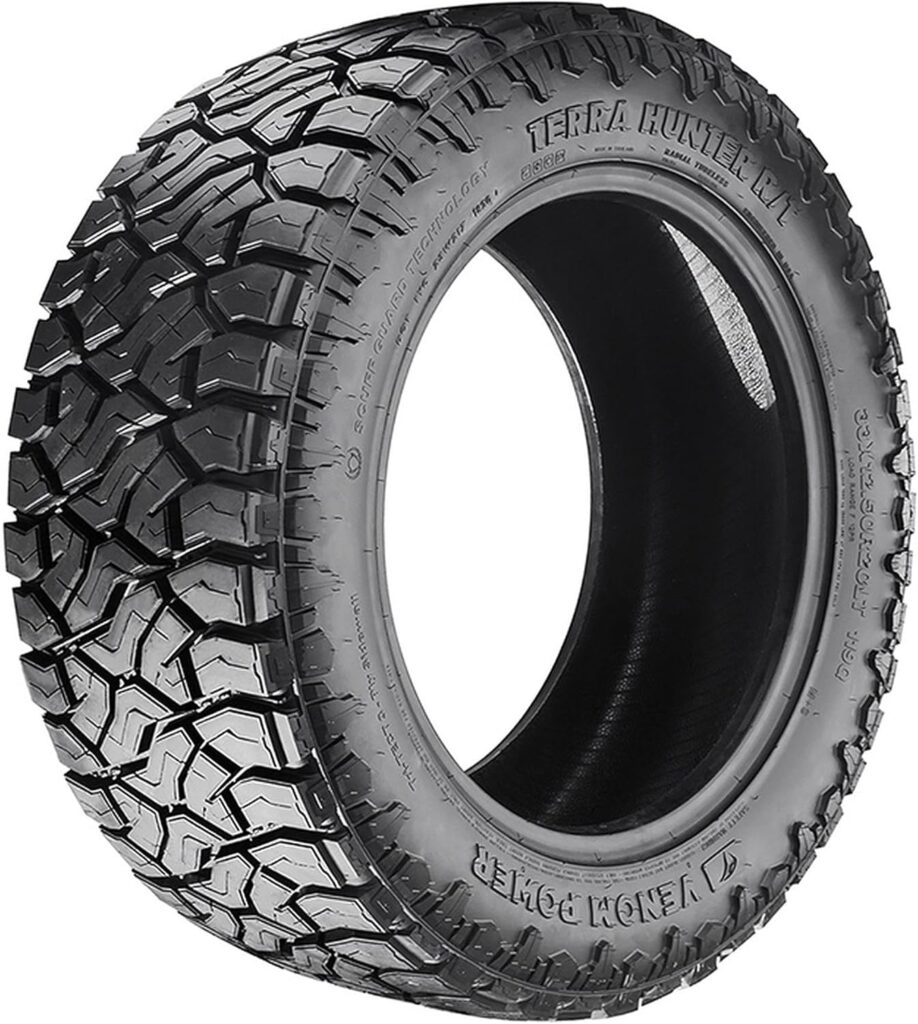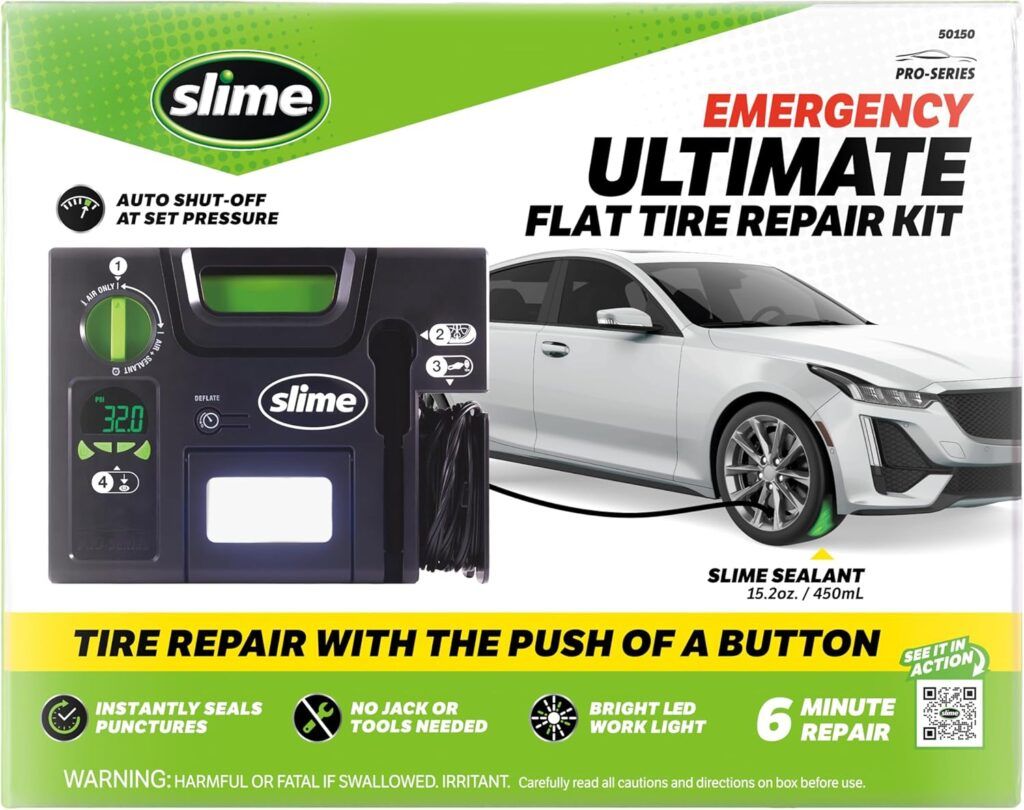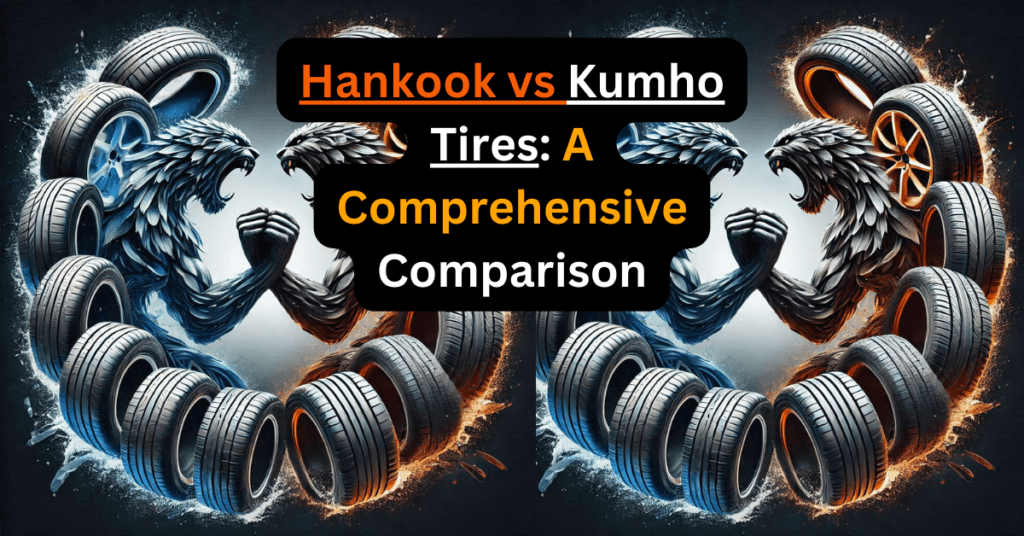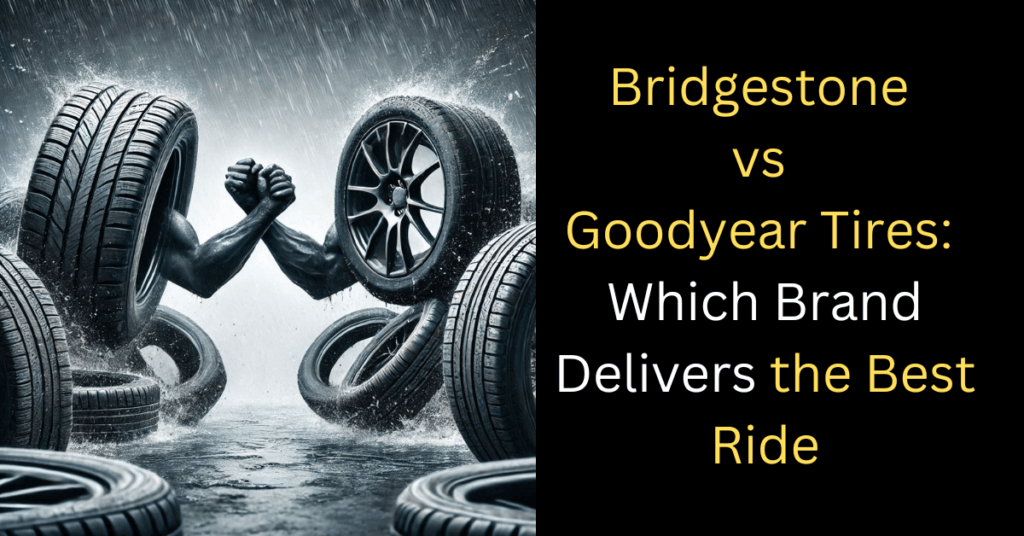When it comes to tire choices, the debate of run-flat tires vs. regular tires is one every driver should understand. Imagine driving down the road when, out of nowhere, a flat tire interrupts your journey. Would you rather have the convenience of run-flat tires that let you keep driving or the affordability and performance benefits of traditional tires?
In this comprehensive comparison we’ll explore the key differences between these two options—covering safety, performance, cost, and more—so you can make an informed decision for your vehicle and driving habits. Let’s get into it!
Let’s take a look at the details of how run flat tires compare to regular tires across various factors.


The Fundamental Difference
Regular tires deflate when punctured, leaving vehicles immobile. Run flat tires, however, maintain their shape and function for a limited distance even after losing air pressure.
This capability comes from reinforced sidewalls that support the vehicle’s weight even when the tire is completely deflated.
Historical Context
The concept of run flat tires dates back to 1934 when Michelin introduced their “supporting tire.” However, it wasn’t until the 1980s that Goodyear and Bridgestone developed the modern run flat designs we see today.
Fun Fact: BMW was among the first automakers to widely adopt run flat tires as original equipment in the early 2000s, signaling a potential shift in the industry.
Safety and Convenience
The primary advantage of run flat tires is their ability to continue functioning after a puncture. Most run flat tires can be driven on for up to 50 miles at speeds up to 50 mph after losing air pressure.
This feature can be crucial in dangerous areas or situations where changing a tire isn’t possible or safe.
Regular tires require immediate attention when punctured. This often means changing to a spare tire (if available) or calling for roadside assistance. While this might seem like a clear advantage for run flat tires, other factors complicate the comparison.
Cost and Availability
Run flat tires come with a significant price premium, typically costing 20-40% more than comparable regular tires. This higher initial cost is compounded by the fact that run flat tires often have a shorter lifespan because of their stiffer construction.
Availability presents another challenge for run flat tires. They are less widely available than regular tires, which can be particularly problematic when traveling.
Finding a replacement run flat tire in a remote area might prove challenging, potentially leaving you stranded despite the run flat technology.
Ride Comfort and Performance
The reinforced sidewalls that give run flat tires their unique capabilities also result in a firmer, less comfortable ride. Many drivers report increased road noise and vibration with run flat tires.
Regular tires, with their more flexible construction, generally offer a smoother, quieter ride. They also tend to have better performance characteristics in terms of handling and fuel efficiency because of their lower rolling resistance.
Vehicle Compatibility and Design Considerations
Run flat tires require vehicles to be specifically designed to accommodate them. This includes specialized wheel rims and advanced tire pressure monitoring systems (TPMS) to alert drivers of pressure loss.
Not all vehicles are compatible with run flat tires, which can limit your options when it’s time for a replacement.
Regular tires, being the standard, are compatible with virtually all vehicles. However, they do require the vehicle to have space for a spare tire, which can impact cargo capacity.
Environmental Impact
The environmental implications of tire choice are often overlooked but increasingly important. Run flat tires, because of their more complex construction and shorter lifespan, may have a larger environmental footprint.
They require more materials to produce and need to be replaced more often.
Regular tires, while still posing environmental challenges, generally have a longer lifespan and are easier to recycle. However, the need for spare tires with regular tires means more overall tire production.
Case Study: BMW’s Run Flat Implementation
In 2006, BMW made the bold decision to equip most of its new vehicles with run flat tires as standard. The company cited improved safety, increased cargo space, and reduced vehicle weight as key benefits.
However, the move was met with mixed reactions from consumers. Many BMW owners complained about the harsher ride quality and higher replacement costs.
Some even went as far as to switch back to regular tires, accepting the trade-off of carrying a spare.
This case study highlights the importance of considering all factors when implementing new tire technology. While the safety benefits were clear, the impact on ride comfort and cost were significant enough to affect customer satisfaction.
Below is comparison table for Run Flat Tires vs. Regular Tires:
| Feature | Run Flat Tires | Regular Tires |
|---|---|---|
| Definition | Tires designed to keep functioning for a limited distance after losing air. | Standard tires that require immediate repair or replacement if punctured. |
| Puncture Handling | Can be driven for 50-100 miles after a puncture (at reduced speeds). | Cannot be driven safely once flat; immediate repair or spare tire needed. |
| Convenience | No need to stop immediately for a tire change or tow. | Requires immediate attention or the use of a spare tire. |
| Ride Comfort | Stiffer sidewalls may result in a firmer ride. | Softer ride due to more flexible sidewalls. |
| Cost | Generally more expensive to purchase and replace. | More affordable and widely available. |
| Durability | Built to handle punctures temporarily but not as durable long-term. | Typically more durable over time if well-maintained. |
| Weight | Heavier than regular tires, potentially reducing fuel efficiency. | Lighter, contributing to better fuel efficiency. |
| Availability | Limited availability depending on location and vehicle. | Widely available for most vehicles. |
| Compatibility | Requires vehicles equipped with Tire Pressure Monitoring Systems (TPMS). | Compatible with all standard vehicles. |
| Repairability | Often not repairable after a puncture. | Can usually be repaired, depending on damage. |
Common Pitfalls and How to Avoid Them
When considering run flat tires, be aware of these potential issues:
1. Misunderstanding the limitations
Run flat tires are not indestructible. Driving beyond the recommended distance or speed when flat can cause irreparable damage.
Always follow manufacturer guidelines and replace the tire as soon as possible after a puncture.
2. Neglecting regular maintenance
The inability to visually identify a flat run flat tire can lead to neglect. Regular pressure checks are crucial.
Use your vehicle’s tire pressure monitoring system and perform manual checks regularly.
3. Underestimating the cost
Factor in not just the higher initial cost, but potentially more frequent replacements. Budget accordingly and consider the long-term financial impact of choosing run flat tires.
4. Ignoring vehicle compatibility
Not all vehicles are designed for run flat tires. Ensure your car is compatible before making the switch.
Consult your vehicle’s manual or speak with a dealership representative.
To avoid these pitfalls, educate yourself thoroughly on run flat technology, maintain a rigorous tire maintenance schedule, and talk to tire professionals familiar with your specific vehicle model.
Adapting to Different Scenarios
The choice between run flat and regular tires often depends on your specific circumstances:
Urban Driving
In cities with readily available roadside assistance, the benefits of run flat tires might be less pronounced. Regular tires could be a more cost-effective choice. Consider factors like traffic congestion, parking availability, and the prevalence of tire-damaging road hazards in your area.
Rural or Remote Travel
If you often drive in areas where help might be far away, the safety advantages of run flat tires could outweigh the drawbacks. The ability to continue driving after a puncture could be crucial in remote locations or on long stretches of highway.
Performance Driving
Enthusiasts might prefer the handling characteristics and wider selection of regular tires for high-performance applications. The lower weight and better responsiveness of regular tires can make a noticeable difference in vehicle dynamics.
Family Vehicles
The added safety of run flat tires might be particularly appealing for family cars, despite the higher costs. The peace of mind knowing you won’t be stranded with children in the car can be invaluable.
The Future of Tire Technology
Understanding the differences between run flat and regular tires is just the beginning. The tire industry is constantly evolving, with new technologies on the horizon that could render this debate obsolete.
One such innovation is the rise of airless tires, which may revolutionize the industry by addressing the limitations of both run-flat and regular tires.
1. Airless Tires
Michelin’s Tweel, introduced in 2006, combines the wheel and tire into a single airless unit. This technology could potentially offer the benefits of both run flat and regular tires without the drawbacks.
Airless tires eliminate the risk of punctures entirely while potentially offering improved ride quality and longevity.
2. Self-Sealing Tires
Another emerging technology is self-sealing tires, which use a special inner liner to automatically seal punctures as they occur. This could provide the safety benefits of run flat tires without the associated ride comfort issues.
Major tire manufacturers are investing heavily in this technology, and we may see widespread adoption in the coming years.
3. Smart Tires
The integration of sensors and connectivity features into tires is another area of rapid development. These “smart tires” can provide real-time data on tire pressure, temperature, and wear, potentially improving safety and performance while reducing maintenance needs.
Recommendations
Cost Analysis
Calculate the total cost of ownership (including purchase price and estimated lifespan) for both run flat and regular tires for your vehicle over a 5-year period. Consider factors such as:
- Initial purchase price
- Expected lifespan (miles)
- Fuel efficiency impact
- Potential roadside assistance or towing costs
Doing this will give you a clear picture of the long-term financial implications of your tire choice.
Test Drive Comparison
Arrange to test drive similar vehicles equipped with run flat and regular tires. Pay attention to differences in:
- Ride comfort
- Road noise levels
- Handling characteristics
- Fuel efficiency (if possible to measure)
Take notes during each drive and compare your experiences. This hands-on approach will help you understand the practical differences between the two tire types.
Emergency Scenario Planning
Create a plan for dealing with a flat tire in various scenarios (urban, highway, remote area) with both run flat and regular tires. Consider factors like:
- Time required to address the issue
- Safety concerns in different environments
- Tools and skills needed
- Potential costs involved
Considering these factors will help you assess the real-world implications of your tire choice in emergency situations.
Maintenance Tips for Both Tire Types
Regardless of whether you choose run flat or regular tires, proper maintenance is crucial for safety, performance, and longevity.
Regular Pressure Checks
Check your tire pressure at least once a month and before long trips. Proper inflation is critical for both tire types but especially important for run flat tires because of their unique construction.
Rotation and Alignment
Rotate your tires according to the manufacturer’s recommendations, typically every 5,000 to 8,000 miles. Regular alignment checks can prevent uneven wear and extend tire life.
Visual Inspections
Regularly inspect your tires for signs of wear, damage, or foreign objects. Pay special attention to the sidewalls of run flat tires, as damage in this area can compromise their run flat capabilities.
Seasonal Considerations
If you live in an area with distinct seasons, consider switching between summer and winter tires for optimal performance and safety. This applies to both run flat and regular tires.
Making the Right Choice for Your Needs
Choosing between run flat and regular tires ultimately comes down to your person needs, priorities, and driving habits. Consider the following factors:
- Your typical driving environment (urban, rural, highway)
- Your comfort level with changing a tire or dealing with roadside emergencies
- The importance of ride comfort versus run flat capability
- Your budget for initial purchase and long-term maintenance
- Your vehicle’s compatibility with run flat tires
- Availability of tire services in your area
By carefully weighing these factors, you can make an informed decision that balances safety, comfort, and cost-effectiveness for your specific situation.
Key Takeaways
- Run flat tires offer improved safety and convenience but at a higher cost and with potential comfort trade-offs.
- Regular tires provide better ride comfort and are more cost-effective but lack the safety advantages of run flats in emergency situations.
- The choice between run flat and regular tires depends on personal priorities, driving conditions, and vehicle compatibility.
- Emerging technologies may soon offer choices that mix the benefits of both tire types.
- Regardless of tire choice, regular maintenance and understanding of your tires’ capabilities are crucial for safety and performance.
FAQs about Run Flat & Regular Tires
1. What are the disadvantages of run flat tires?
Run flat tires typically have a harsher ride, higher cost, shorter lifespan, and limited availability compared to regular tires. They also require vehicles to be specifically designed to accommodate them.
2. How long can you drive on a run flat tire after a puncture?
Most run flat tires can be driven for up to 50 miles at speeds up to 50 mph after losing air pressure. However, this can vary depending on the specific tire model and driving conditions.
3. Are run flat tires worth the extra cost?
The value of run flat tires depends on person needs. They offer increased safety and convenience in emergency situations, which may justify the higher cost for some drivers, especially those who often travel in remote areas.
4. Can you repair a run flat tire?
Many manufacturers do not recommend repairing run flat tires because of potential structural damage that may not be visible. Always talk to a tire professional or the tire manufacturer for specific guidance.
5. Do run flat tires affect fuel economy?
Run flat tires can slightly reduce fuel economy because of their heavier construction and higher rolling resistance compared to regular tires.
6. Can you put regular tires on a car that came with run flats?
In most cases, you can switch from run flat to regular tires, but it’s important to confirm your vehicle has space for a spare tire and that the change doesn’t affect other vehicle systems. Consult with a professional before making the switch.
7. How do I know if my car has run flat tires?
Check your vehicle’s manual or look for markings on the tire sidewall such as “RFT,” “SSR,” or “Run Flat.” You can also talk to your vehicle’s manufacturer or a tire professional.
8. Are run flat tires safer than regular tires?
Run flat tires can be safer in the event of a puncture by allowing you to continue driving to a safe location. However, they don’t necessarily provide better overall safety in normal driving conditions.
9. Do all new cars come with run flat tires?
No, not all new cars come with run flat tires. While some manufacturers offer them as standard or optional equipment, many vehicles still use regular tires.
10. Can you mix run flat and regular tires on the same vehicle?
Mixing run flat and regular tires is generally not recommended as it can affect vehicle handling and safety. Always follow the vehicle manufacturer’s recommendations for tire type and configuration.



